16 Perennials That Keep Weeds at Bay in Your Garden
Weeds are a common challenge for gardeners, but there is a natural solution. Some perennials are great at outcompeting weeds, helping to keep your garden healthy. These plants improve the look of your garden and provide strong ground cover that helps prevent unwanted growth. Using the right perennials can significantly reduce the need for frequent weeding and maintenance. Let us take a look at 16 perennials that naturally outcompete weeds and simplify gardening.
This post may contain affiliate links, which helps keep this content free. Please read our disclosure for more info.
Daylilies
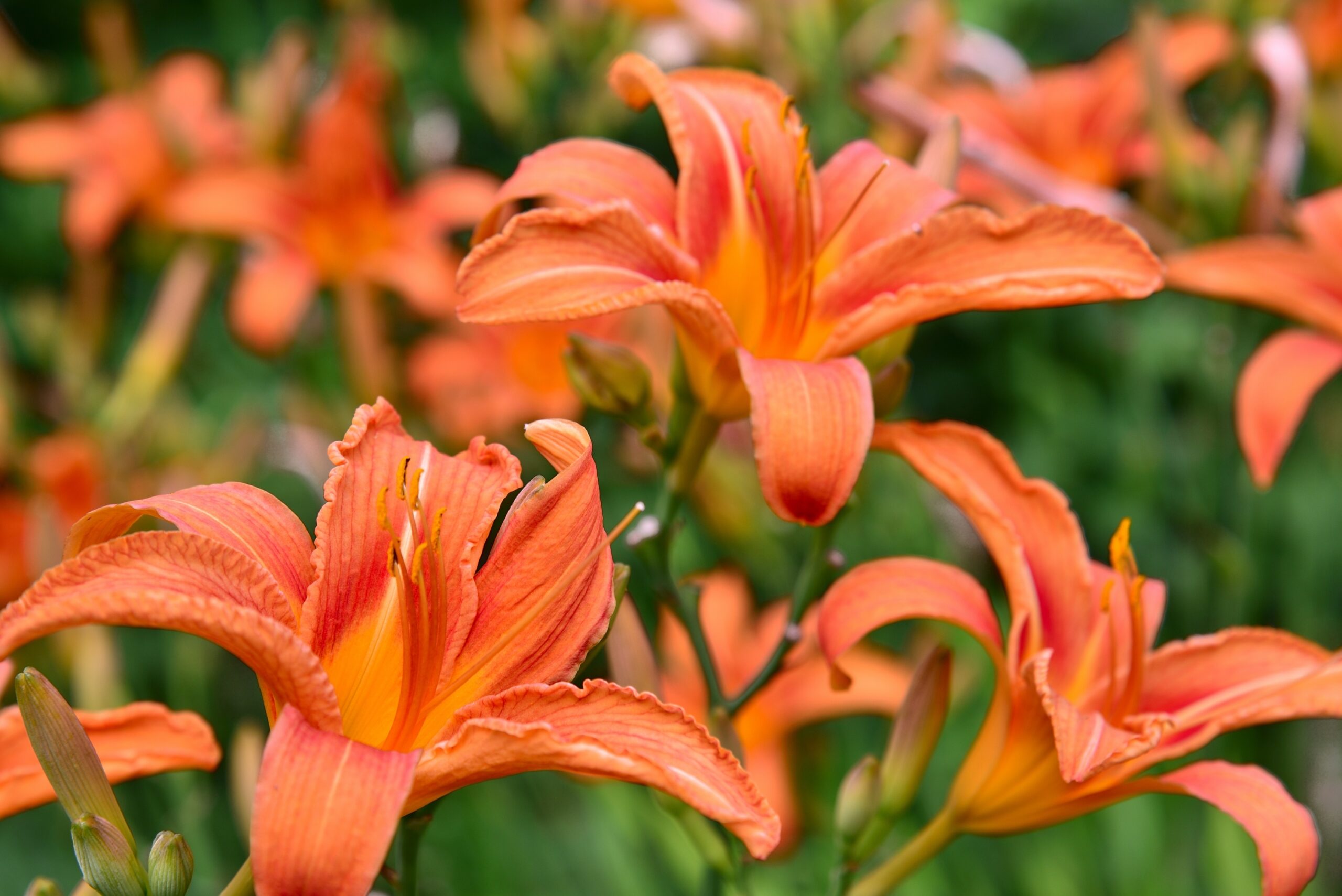
Creeping Jenny
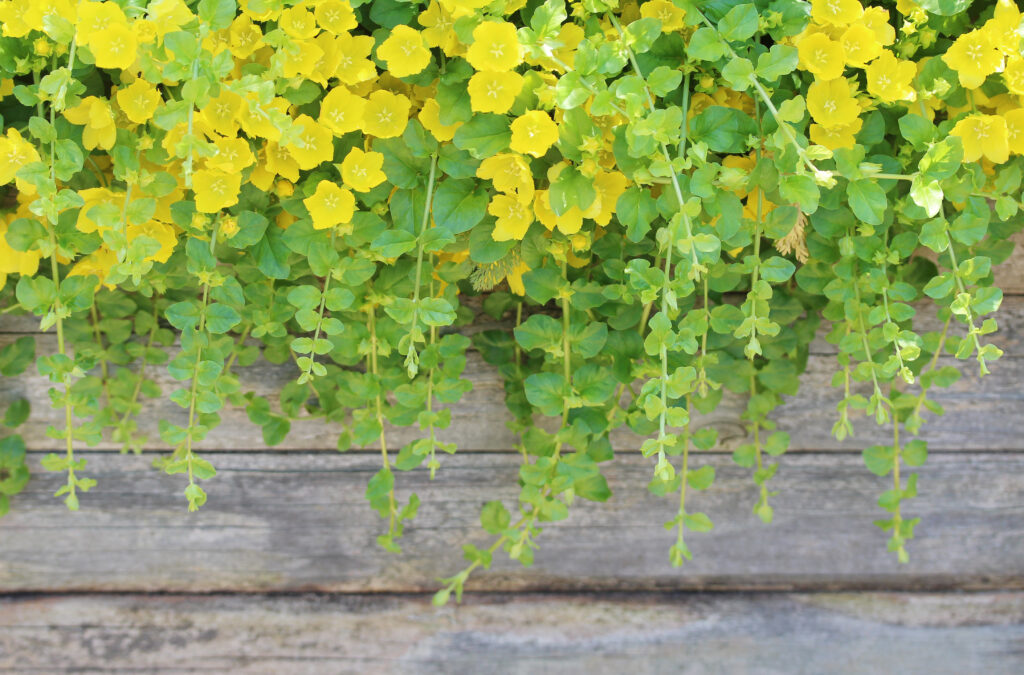
Creeping Jenny is a ground-covering perennial that is highly effective at outcompeting weeds. Its fast-growing, spreading nature quickly fills in areas, leaving little room for weeds to take hold. With its dense foliage and vigorous growth, Creeping Jenny forms a carpet-like layer that suppresses unwanted plants. This perennial thrives in moist, well-drained soils and can handle both full sun and partial shade, making it adaptable to various garden conditions
To encourage optimal growth, Creeping Jenny needs regular watering, particularly in hot, dry weather. It is also important to keep the soil rich in organic matter to support its growth. Creeping Jenny can be invasive in certain areas, so it is important to manage its spread, particularly in garden beds. In addition to its weed-fighting capabilities, its vibrant green foliage and yellow flowers make it a visually appealing choice for any garden.
Mint
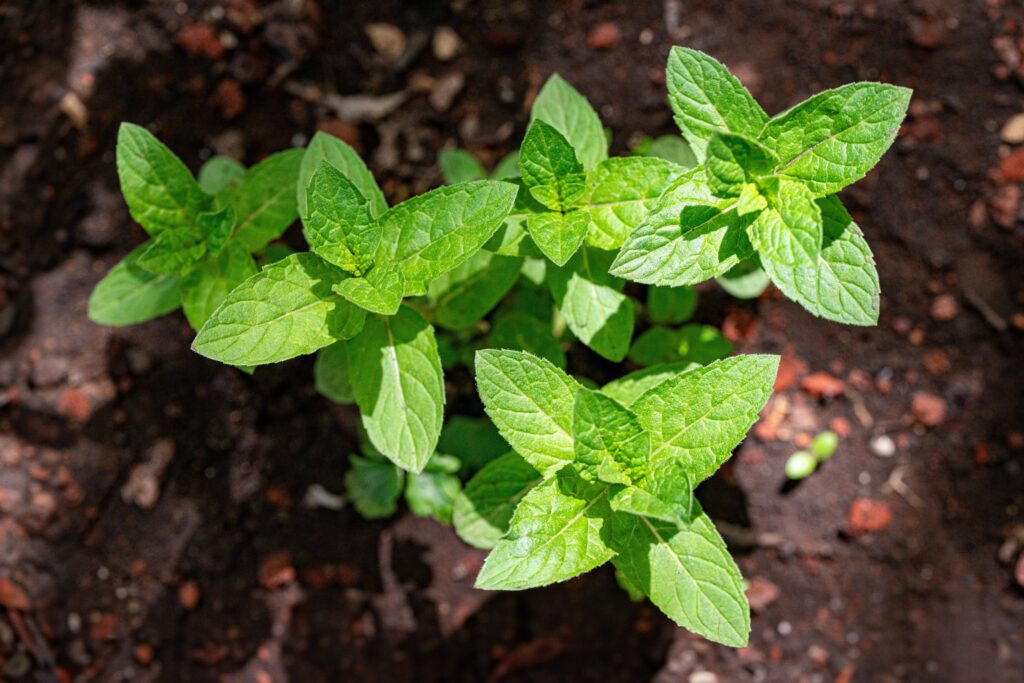
Mint is another hardy perennial that outcompetes weeds through its aggressive growth habit. Its rhizomatic root system allows it to spread quickly, crowding out weeds by occupying space in the garden. Mint thrives in areas that are well-drained and moist, and its rapid expansion leaves little room for competing plants to establish themselves. This herb is perfect for gardeners who want a low-maintenance, natural solution to weed control.
Mint grows best in partial shade but can tolerate full sun in cooler climates. It benefits from regular pruning to prevent it from becoming too invasive, as it can easily take over garden beds if left unchecked. For best results, mint should be grown in containers or confined spaces, as its spread can be difficult to control otherwise. Its fragrant leaves and ability to produce refreshing tea make it a valuable addition to any garden, providing both aesthetic and practical benefits.
Black-Eyed Susan
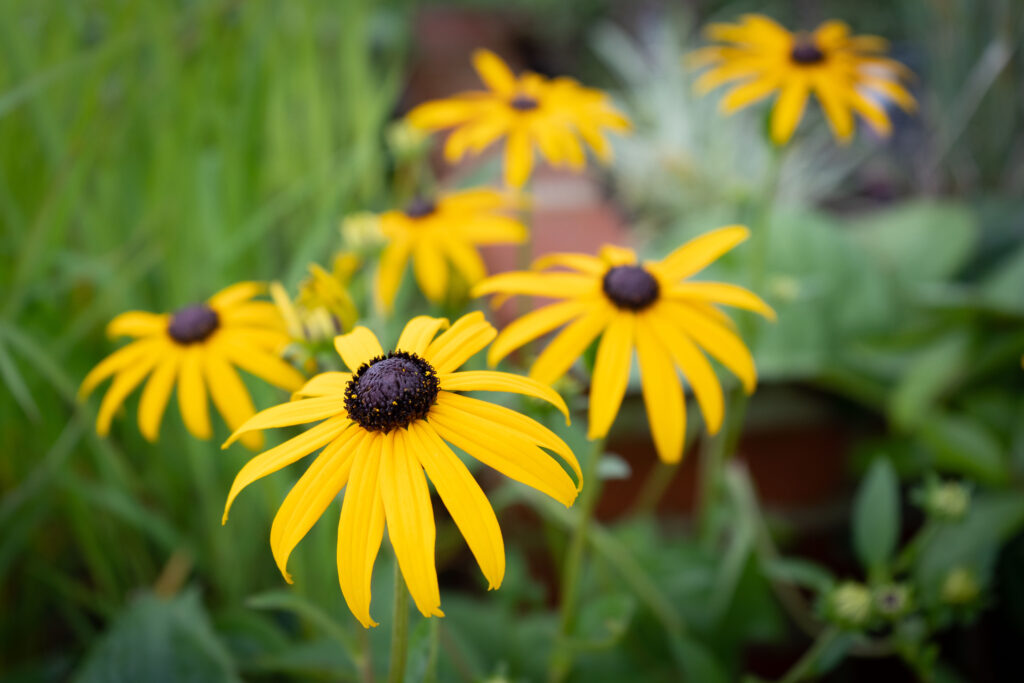
Black-eyed Susans are robust perennials that excel at outcompeting weeds due to their tall, dense growth habit. Their large leaves and bright yellow flowers quickly fill in garden spaces, leaving little room for weeds to thrive. These flowers are excellent at attracting pollinators, which also helps create a balanced ecosystem in your garden. Black-eyed Susans perform well in a variety of soil types, making them a versatile choice for many garden settings.
To grow healthy Black-eyed Susans, ensure they receive full sun for at least six hours per day. Well-drained, slightly sandy soil is ideal, although they can adapt to clay soils if necessary. These plants are drought-tolerant once established, but still benefit from occasional watering. Deadheading spent blooms encourages more flowers, and their self-seeding nature means they will return year after year, continuing to suppress weeds naturally.
Lavender
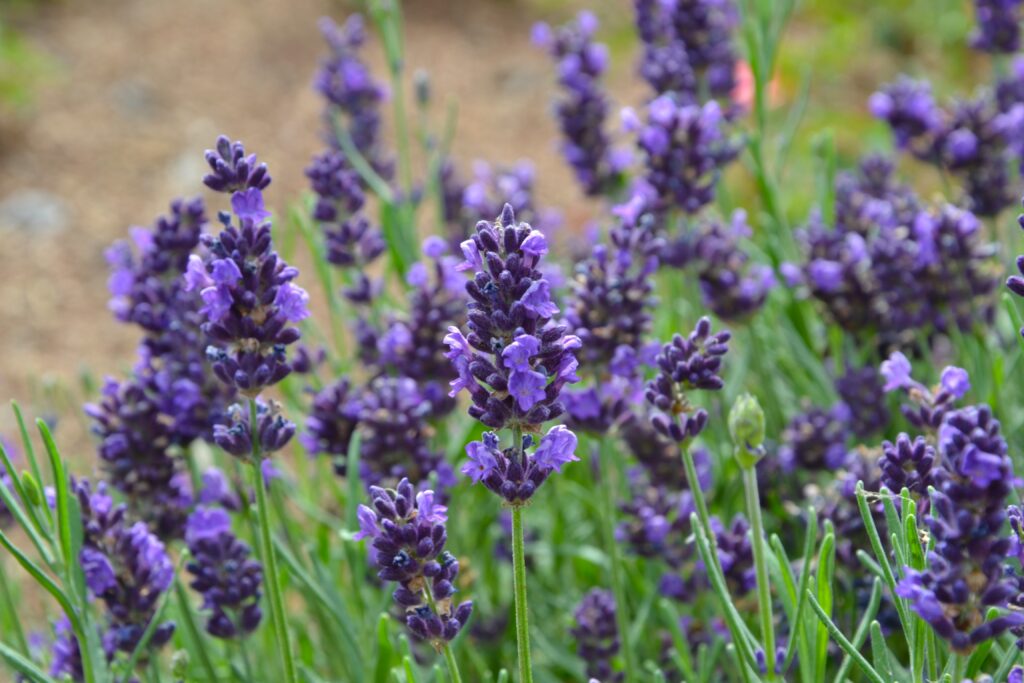
Lavender is not only an aromatic addition to your garden, but it also helps control weeds by forming a dense, woody shrub that limits weed growth underneath. Its tall, fragrant stems create a barrier that prevents weeds from establishing themselves. Lavender thrives in dry, well-drained soil and can tolerate a wide range of climates, particularly Mediterranean and temperate zones. The strong scent of lavender can also repel some pests, providing additional protection for your garden
To grow lavender successfully, plant it in full sun and ensure the soil is well-drained, as it does not tolerate wet feet. It thrives in slightly alkaline soil and benefits from occasional pruning to maintain its shape and encourage new growth. Once established, lavender is drought-tolerant and low-maintenance, making it an excellent choice for sustainable gardening. Its long-lasting blooms add a touch of beauty to your garden while naturally suppressing weeds.
Hostas
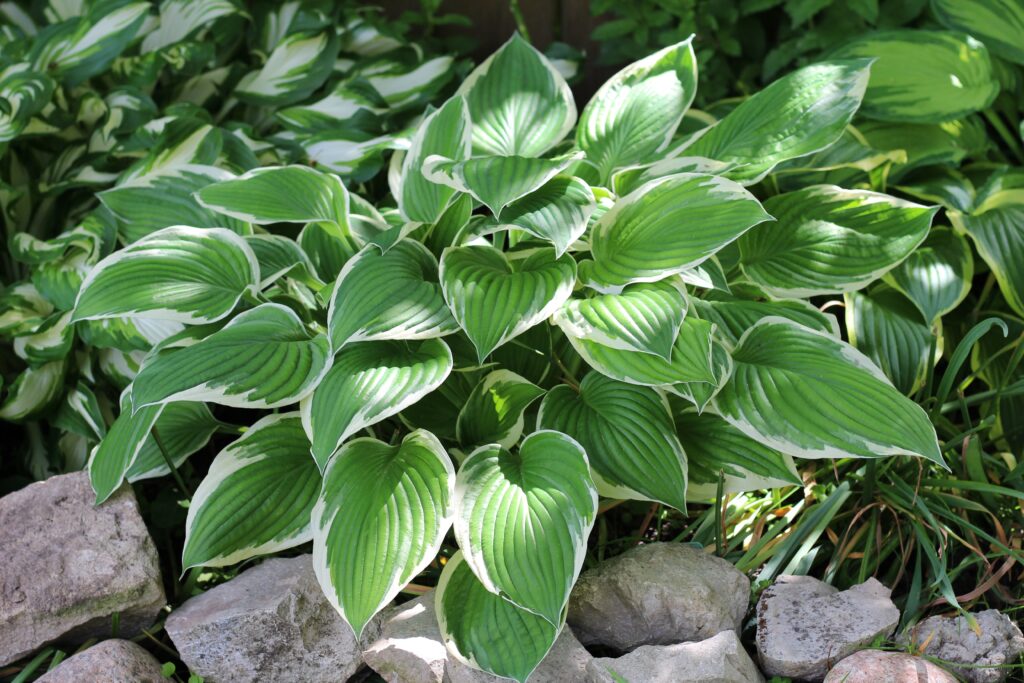
Hostas are shade-loving perennials that are excellent for outcompeting weeds in low-light areas. Their large, broad leaves form a dense cover that blocks sunlight from reaching the soil, preventing weeds from germinating. Hostas are particularly effective in garden beds, along walkways, or under trees where other plants may struggle to grow. This low-maintenance perennial is ideal for adding both texture and color to shaded garden areas while keeping weeds at bay.
Hostas grow best in rich, moist, well-drained soil and prefer partial to full shade. They are relatively low-maintenance but benefit from occasional watering and mulching to retain moisture. Hostas come in a variety of colors and sizes, providing flexibility for garden design. Their broad foliage and slow-growing nature ensure that they will continue to outcompete weeds year after year, making them a dependable choice for any garden.
Peonies
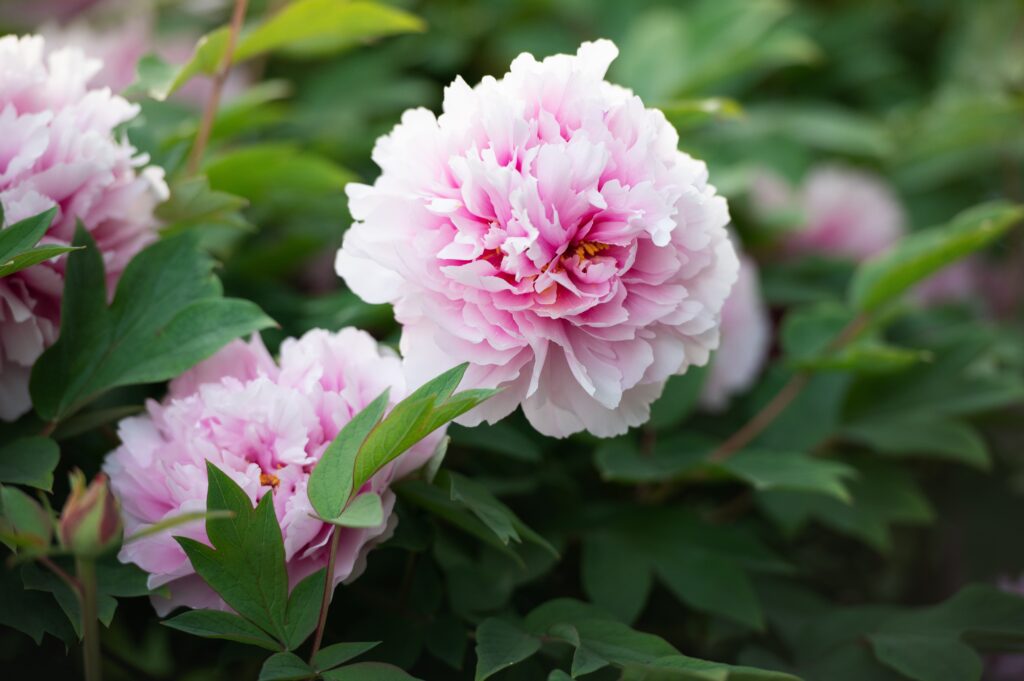
Peonies are an elegant perennial that helps to naturally suppress weeds with their large, bushy growth. Their dense foliage creates a thick ground cover, preventing light from reaching the soil and keeping weeds from taking root. Peonies are long-lived plants that thrive in well-drained, slightly alkaline soil and do well in both temperate and colder climates. Their vibrant, fragrant flowers also attract beneficial pollinators, adding beauty and diversity to your garden.
To ensure healthy peonies, plant them in an area with full sun and good air circulation. They prefer soil that is rich in organic matter, so amend the soil with compost before planting. Once established, peonies are relatively low-maintenance, requiring minimal watering and fertilizing. They are best suited for gardeners looking for a reliable perennial that adds both beauty and function, outcompeting weeds naturally while offering stunning blooms.
Coneflower (Echinacea)
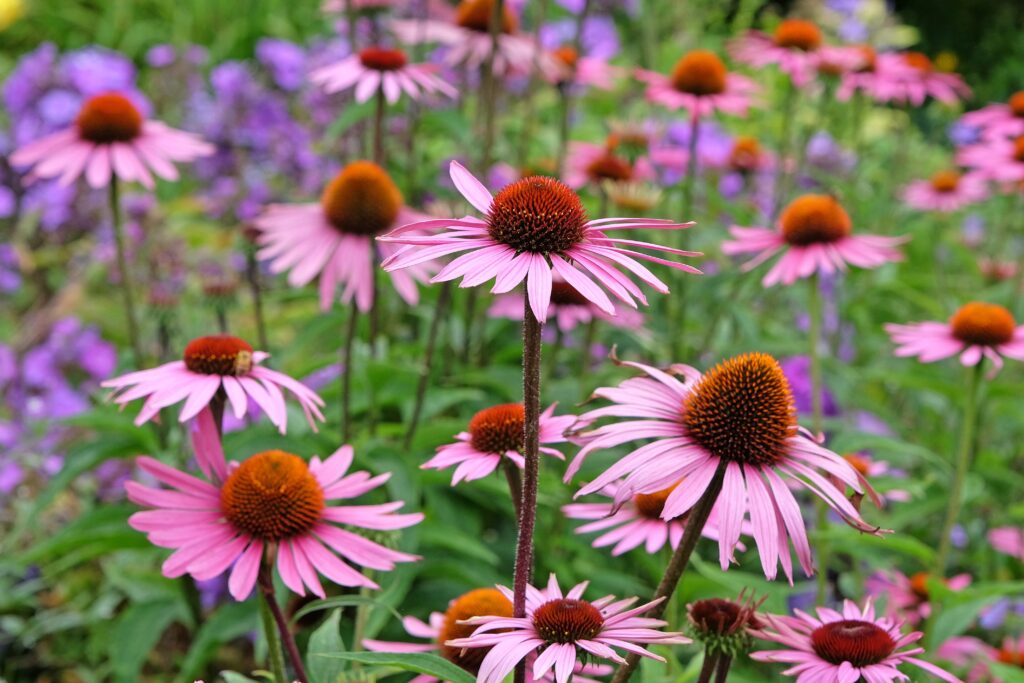
Coneflowers are hardy perennials that are known for their vibrant blooms and weed-suppressing capabilities. Their tall, sturdy stems and wide leaves form a strong, dense ground cover that prevents weeds from taking hold. Coneflowers are drought-tolerant and can thrive in a variety of climates, from dry, hot summers to cooler, temperate regions. They are perfect for attracting pollinators like bees and butterflies, contributing to a healthy ecosystem in your garden.
To grow coneflowers successfully, they need full sun and well-drained soil. They are adaptable to a range of soil types but prefer slightly acidic to neutral soil. Once established, coneflowers require little maintenance, making them an excellent choice for low-effort gardens. Deadheading spent blooms can encourage more flowers, and their self-seeding nature ensures that they continue to thrive and outcompete weeds over time.
Bee Balm (Monarda)
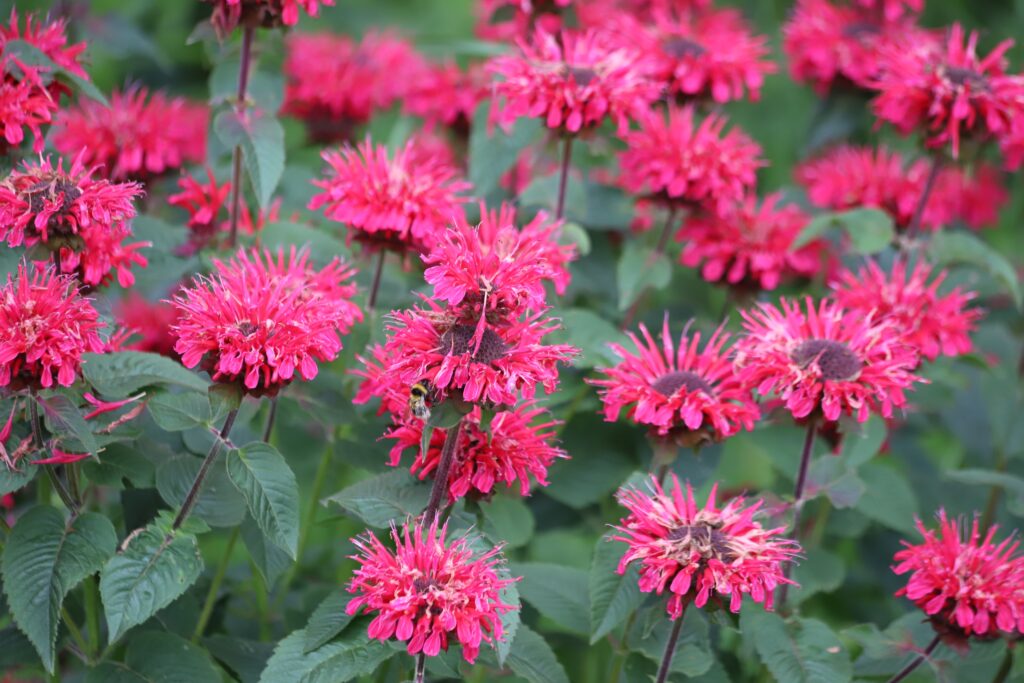
Bee Balm is a vibrant perennial that excels at keeping weeds in check with its rapid growth and wide-spreading nature. Its fragrant flowers and lush foliage fill garden spaces quickly, leaving little opportunity for weeds to take root. Bee Balm is also known for attracting bees, butterflies, and hummingbirds, making it an excellent addition to any pollinator-friendly garden. It thrives in moist, well-drained soil and can grow in a variety of climates, from temperate to warm regions.
To grow Bee Balm successfully, plant it in full sun to partial shade and provide regular watering, especially during dry periods. It prefers soil that is rich in organic matter, but can adapt to a variety of soil types. Bee Balm is easy to maintain once established, and deadheading spent flowers encourages further blooming. Its ability to spread and fill in garden beds ensures that it will continue to outcompete weeds year after year.
Sedum (Autumn Joy)
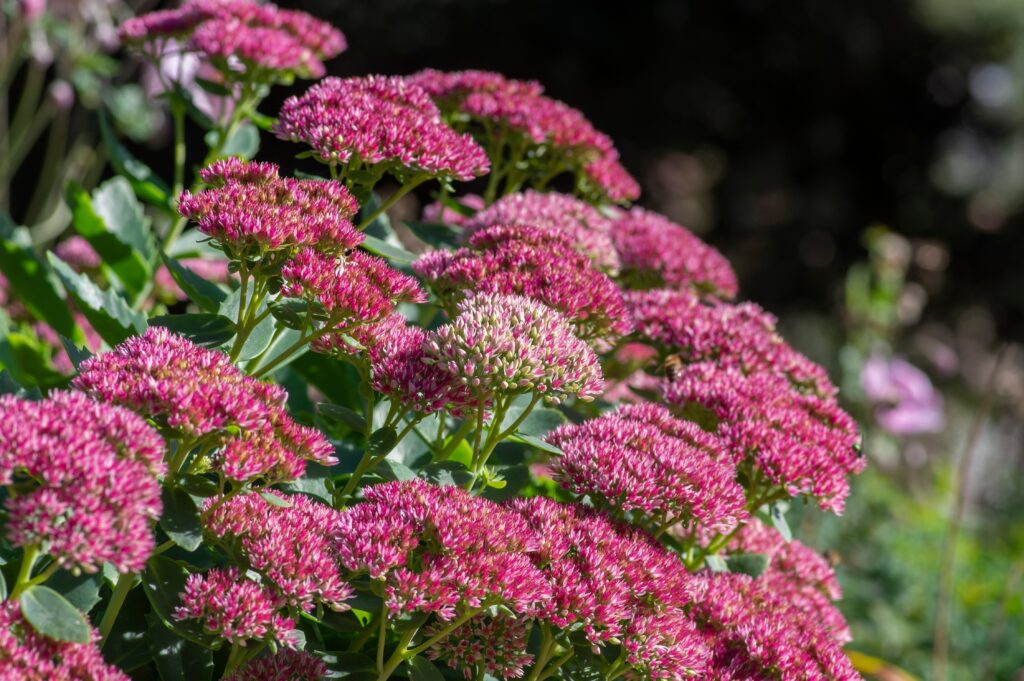
Sedum, also known as Autumn Joy, is a low-maintenance perennial that can outcompete weeds due to its fast-growing, thick foliage. Its dense growth and ability to spread quickly allow it to fill in empty spaces, reducing the chances for weeds to establish themselves. Sedum thrives in a variety of soil types, including dry and poor soils, and does well in both sunny and partially shaded areas. Its resilience and ability to thrive in tough conditions make it a great choice for gardeners looking for a hardy, weed-fighting perennial.
To grow sedum, plant it in full sun for the best blooms, although it can tolerate some light shade. It prefers well-drained soil but is highly drought-tolerant once established. Sedum requires minimal maintenance, with occasional watering during dry spells and cutting back spent flowers in the fall. Its thick, succulent leaves and late-season blooms make it a valuable plant for both weed control and garden aesthetics.
Sweet Woodruff
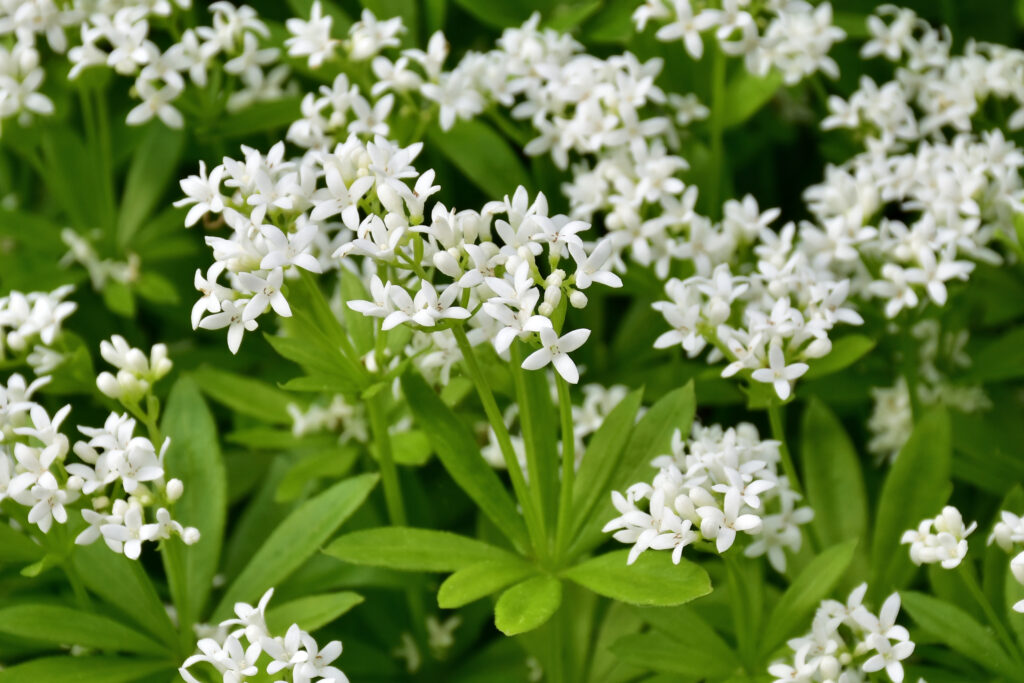
Sweet Woodruff is an excellent groundcover perennial that outcompetes weeds by forming a dense mat of foliage. It thrives in shady areas, making it perfect for under trees or along garden edges where sunlight is limited. Its rapid growth and spreading habit make it an effective weed suppressor, while its fragrant white flowers attract pollinators. Sweet Woodruff is best suited for moist, well-drained soil and can grow in a variety of climates, particularly in temperate zones.
To encourage healthy growth, Sweet Woodruff should be planted in well-shaded areas with consistently moist soil. It can tolerate dry conditions once established, but regular watering is beneficial, especially during hot spells. This perennial is relatively low-maintenance and benefits from occasional pruning to keep it from becoming too unruly. Sweet Woodruff’s ability to spread quickly and cover the ground makes it an ideal solution for outcompeting weeds in shaded garden areas.
Yarrow
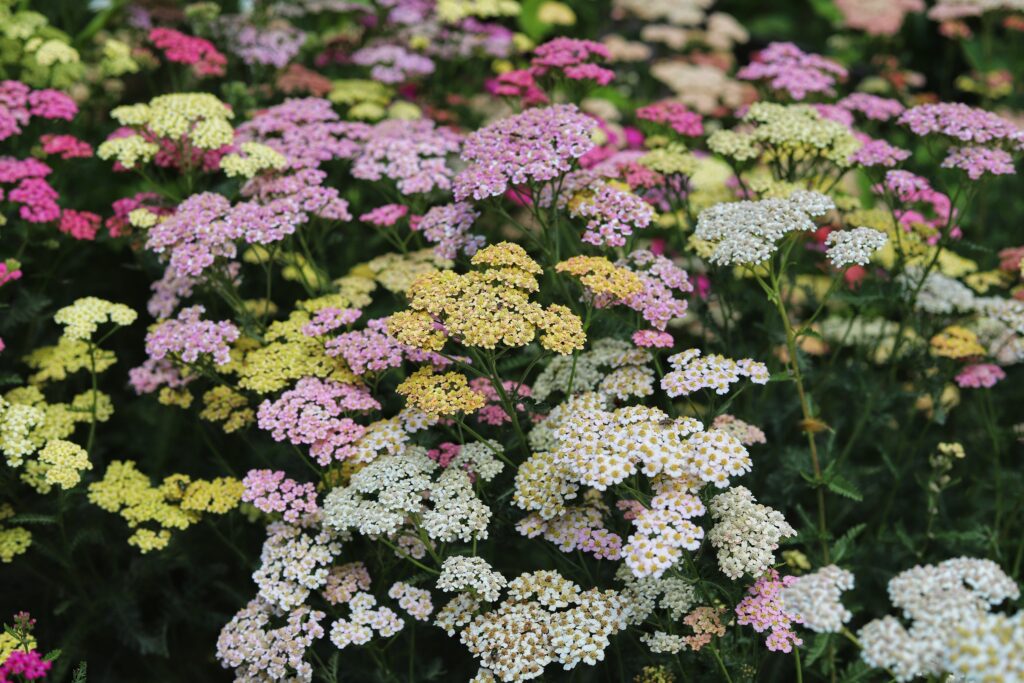
Yarrow is a tough, drought-tolerant perennial that thrives in sunny locations and poor soil conditions. Its dense growth and strong stems allow it to fill in garden spaces, outcompeting weeds for resources like water and nutrients. Yarrow produces beautiful clusters of flowers that attract pollinators while providing excellent ground cover. It can grow in a wide range of climates, from dry, arid regions to cooler temperate zones.
Yarrow prefers well-drained soil and full sun but can tolerate partial shade. It benefits from occasional watering during dry periods, although it is highly drought-resistant once established. Deadheading spent flowers encourages further blooming, and the plant’s strong root system helps it crowd out weeds. Yarrow’s resilience and ability to thrive in tough conditions make it a reliable option for gardeners seeking a natural, low-maintenance solution to weed control.
Lungwort (Pulmonaria)
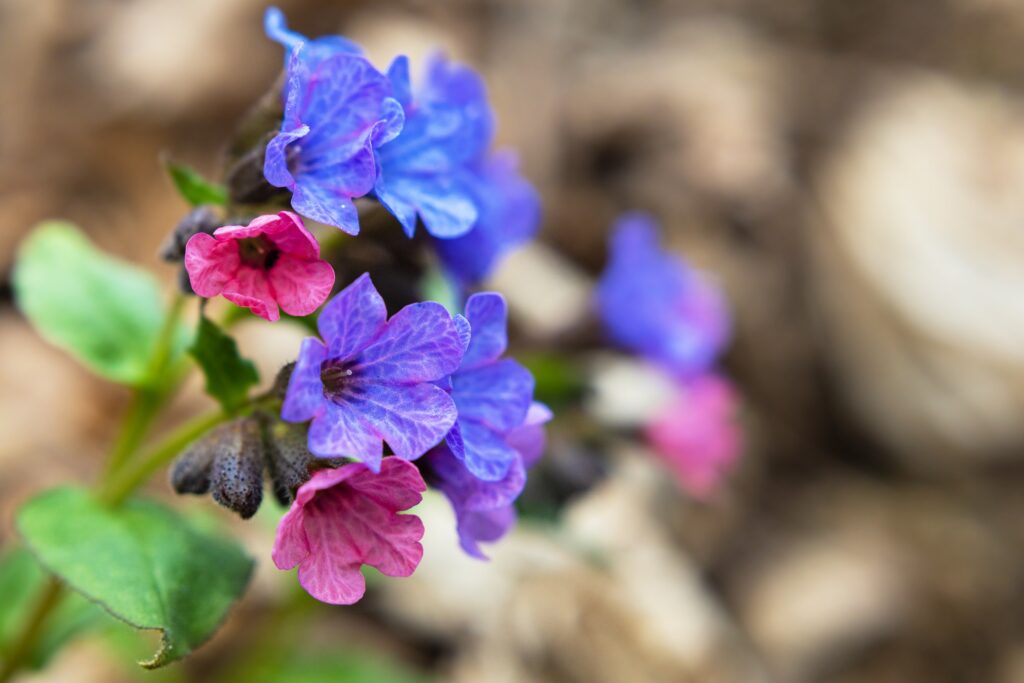
Lungwort is a low-growing perennial that excels in shady garden areas, making it perfect for outcompeting weeds in difficult-to-grow spots. Its dense, spreading foliage covers the ground, preventing weeds from taking hold. Lungwort produces beautiful blue, pink, or white flowers in early spring, attracting beneficial pollinators while adding visual interest to your garden. It thrives in moist, well-drained soil and performs best in cooler climates.
To grow Lungwort, plant it in partial to full shade and keep the soil consistently moist. It prefers rich, slightly acidic soil and benefits from a layer of mulch to retain moisture. This perennial is low-maintenance and can thrive without much attention once established. Lungwort’s ability to spread and cover the ground naturally reduces the need for weeding, making it a valuable addition to any garden.
Japanese Spurge
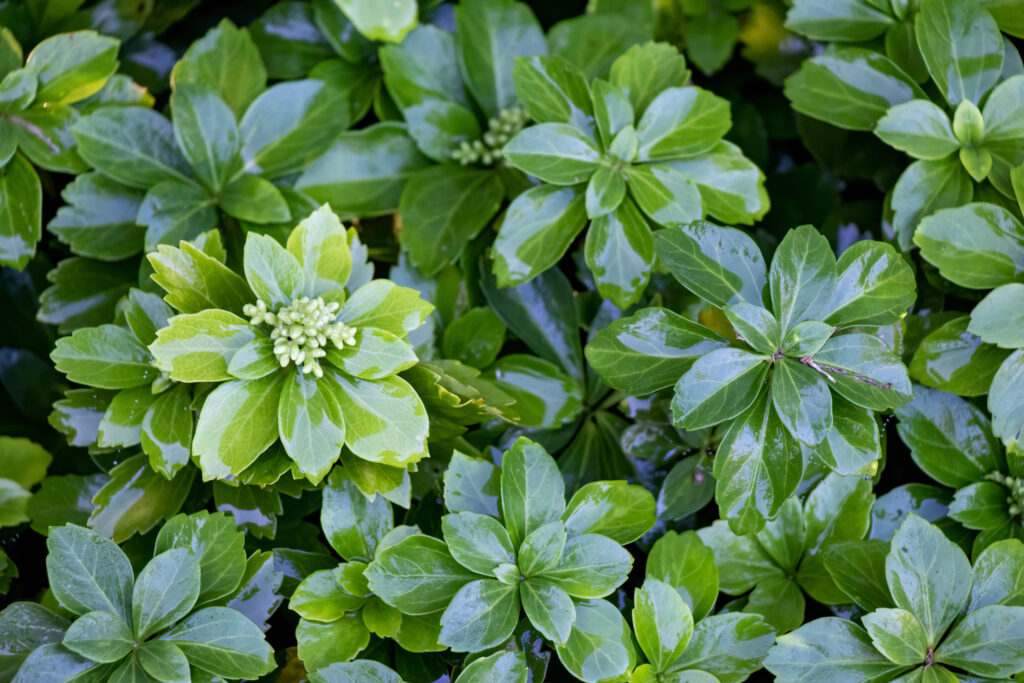
Japanese Spurge, also known as Pachysandra, is a dense-growing ground cover that is highly effective at suppressing weeds. It thrives in shady areas where other plants might struggle to grow, making it an excellent choice for shaded garden beds. The thick foliage forms a carpet that blocks sunlight, preventing weed seeds from germinating. Japanese Spurge is especially beneficial in areas under trees or along shaded walkways where weed growth can be a problem.
This perennial grows best in well-drained, moist soil and requires little maintenance once established. It is relatively drought-tolerant and can handle a variety of soil conditions, making it an adaptable choice for many gardens. Japanese Spurge spreads slowly but steadily, filling in garden spaces over time. It is an ideal plant for gardeners seeking a low-maintenance ground cover that outcompetes weeds naturally.
Solomon’s Seal
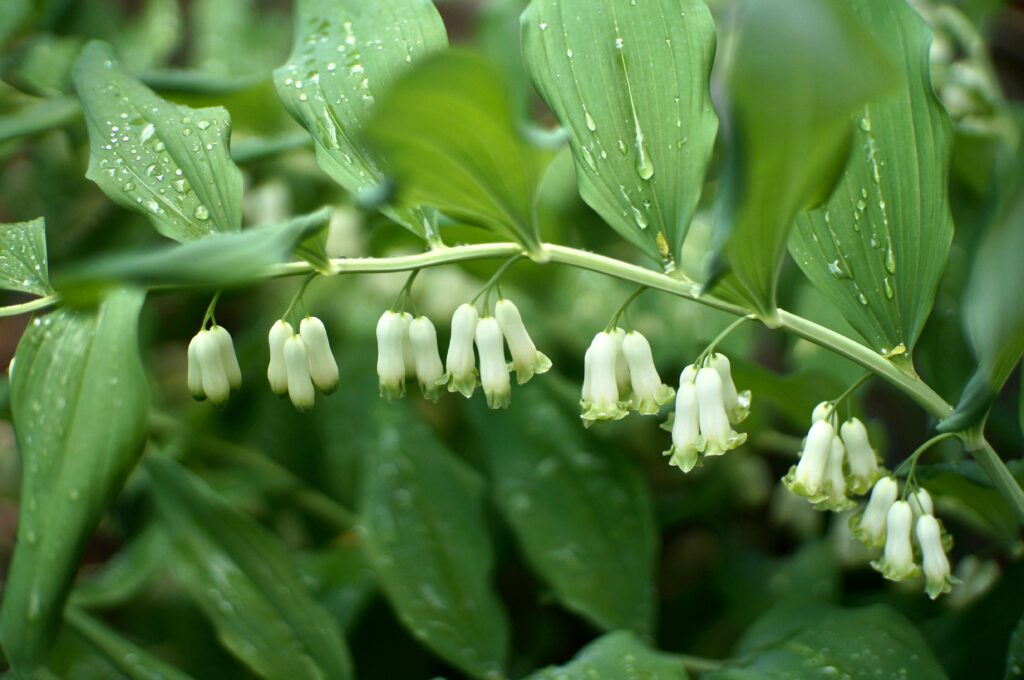
Solomon’s Seal is an elegant perennial that grows well in shaded areas and forms a dense mat of foliage, making it an excellent choice for weed suppression. Its arching stems and nodding flowers create a beautiful display in the garden while providing valuable ground cover. Solomon’s Seal thrives in moist, well-drained soil and is well-suited to woodland gardens or areas with filtered light. Its dense foliage prevents weeds from taking root by blocking sunlight and competing for resources.
To grow Solomon’s Seal successfully, plant it in shaded to partially shaded areas with consistently moist soil. It prefers rich, slightly acidic soil and benefits from occasional watering during dry spells. Once established, this perennial requires minimal care, making it a great low-maintenance option for controlling weeds. Solomon’s Seal’s ability to grow in difficult conditions while keeping weeds at bay makes it a reliable addition to any garden.
Astilbe
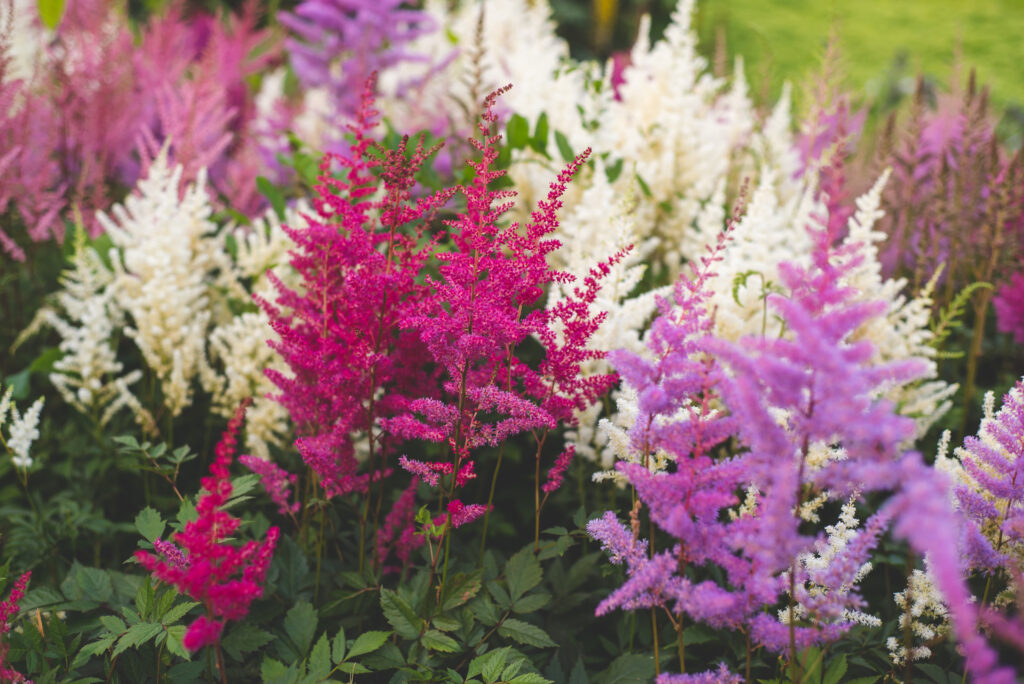
Astilbe is a shade-loving perennial that thrives in moist, well-drained soil and is excellent at crowding out weeds. Its dense clumps of feathery flowers and foliage provide natural weed control by filling garden spaces with minimal effort. Astilbe does well in temperate climates and is especially useful in shaded areas where other plants may struggle to grow. The plant’s ability to form a solid ground cover makes it a reliable choice for both weed suppression and garden beauty.
To grow Astilbe, give it partial to full shade and consistently moist soil. It benefits from a layer of mulch to retain moisture and keep the soil cool. Astilbe is relatively low-maintenance and can tolerate both heat and cold once established. By providing thick, attractive ground cover, Astilbe naturally outcompetes weeds and adds color to shaded garden areas.
This article originally appeared on Avocadu.
